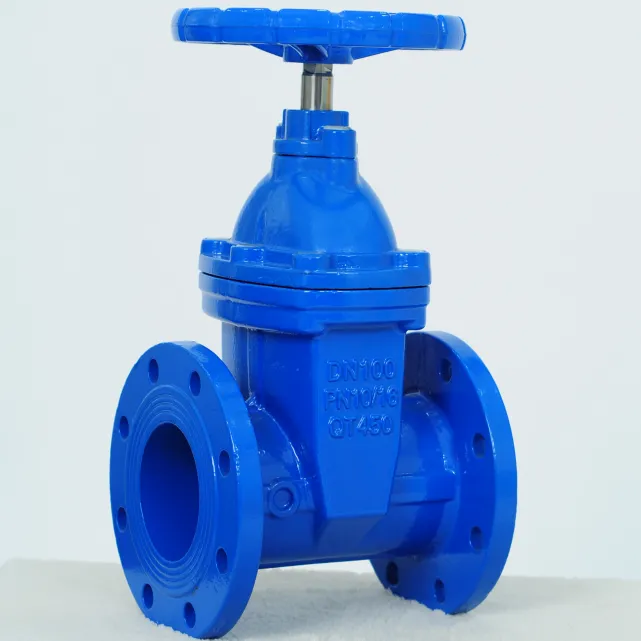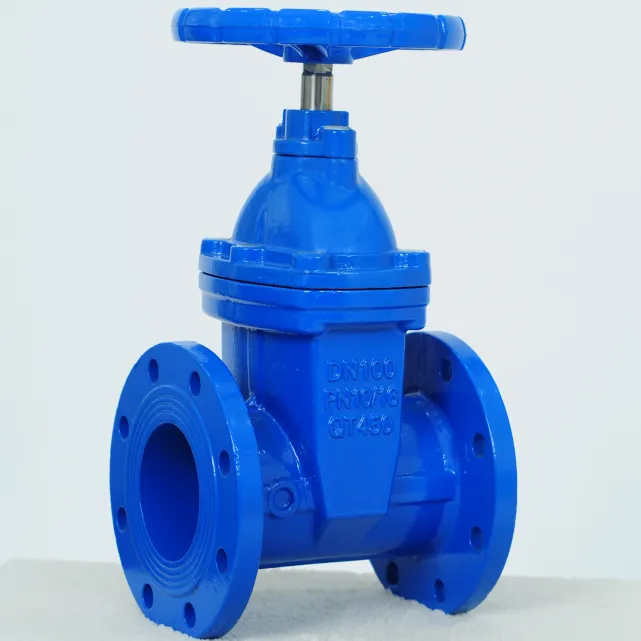gate valve
Gate valves, a fundamental component in fluid handling systems, continue to be a topic of robust discourse and development. The underlying design of these valves allows for unobtrusive flow control, making them indispensable for various industries like oil and gas, water treatment, and chemical processing. With a reputation built on reliability and efficiency, understanding the inner workings and applications of gate valves is paramount for engineers and procurement specialists alike seeking to optimize their systems.

Gate valves operate by lifting a round or rectangular gate out of the path of the fluid. This simple yet effective mechanism offers minimal pressure drop when fully open and provides a tight seal when closed. The unique design of gate valves allows for a linear flow path, making them particularly suitable for on/off control, especially in applications involving thick fluids where pressure drop needs to be minimized.
The materials used in gate valve construction are crucial to their performance and longevity. Common materials include stainless steel, cast iron, and bronze, chosen for their ability to withstand varying degrees of pressure, temperature, and corrosive environments. Selecting the appropriate material is essential, taking into consideration factors like the nature of the fluid, pressure conditions, and temperature range. For instance, in the chemical industry, corrosion-resistant materials are often prioritized to ensure safety and durability.

A notable feature of gate valves is their availability in different types tailored to specific needs. Rising stem gate valves, for instance, provide a visual indication of valve position, making them user-friendly in settings where frequent monitoring is required. Non-rising stem gate valves, on the other hand, are ideal for installations with limited space, providing functionality without occupying additional vertical space.
gate valve
Industry professionals consistently emphasize the importance of proper installation and maintenance of gate valves to ensure optimal performance. Regular maintenance involves checking for leaks, ensuring the valve is operating smoothly, and replacing any worn components. It's recommended that industries adhere to a rigorous inspection schedule, with trained personnel examining valve conditions, as neglecting these aspects can lead to system failures and costly downtime.
Despite the robust nature of gate valves, new challenges such as energy efficiency and environmental regulations are shaping the future of valve engineering. Manufacturers today are innovating with designs that aim to reduce fugitive emissions and improve energy efficiency. These advancements not only align with global sustainability goals but also offer businesses cost savings and enhanced system performance.
When sourcing gate valves, engaging with reputable manufacturers and distributors is critical. Suppliers with proven track records and comprehensive after-sales support can provide invaluable assistance, ensuring that the correct specifications are met and offering guidance on installation and maintenance best practices. This partnership approach yields benefits not only in operational efficiency but also in risk mitigation.
In conclusion, gate valves remain a cornerstone in fluid control technology. Their versatility, reliability, and efficiency make them an essential asset across various industries. Professionals investing in understanding their functionality, appropriate material selection, and meticulous maintenance are strategically positioned to leverage these systems’ full potential, ensuring both operational excellence and compliance with evolving industry standards. Navigating the intricacies of gate valve applications and innovations will continue to be a cornerstone for businesses dedicated to advancing their infrastructure and operations.
-
Breakthrough in Domestic Low Temperature Valve Technology in ChinaNewsAug.18,2025
-
From Machinery to Intelligent Brain: The Digital Transformation Wave of the Valve IndustryNewsAug.18,2025
-
PCVEXPO 2025NewsAug.18,2025
-
The Key to Fluid Control: Exploring the Advantages of Ball Valves in Industrial SystemsNewsJul.09,2025
-
The Versatile World of 1, 2, and 3 Piece Ball ValvesNewsJul.09,2025
-
Stainless Steel Ball Valves: The Ideal Choice for Efficient Flow ControlNewsJul.09,2025
-
Optimizing Fluid Control with Ball Float ValvesNewsJul.09,2025




